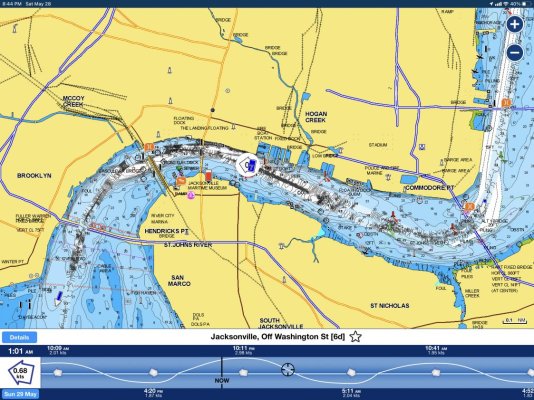Where the St. Johns River passes through downtown Jacksonville a number of factors affect the current. 1) The river narrows significantly, which constricts the flow and increases the velocity. 2) At Commodore's Point (just below the Hart fixed bridge), not only does the river widen, but the dredged Federal channel begins its path to the ocean. That means that as water is released from the narrows, it enters the downstream section of the river with little resistance. 3) Upstream of the downtown narrows, the river also widens, but its depths are considerably shallower than at any points downriver. The result is that the force of the inbound current is pushing against the weight of a slower-moving pool, and spreads across a much broader basin.
In other words, there is a significant differential between the hydrogeology of the two sections of the river at either end of the downtown narrows. Of course, variables come into play, such as significant rainfall events, prevailing winds and lunar phases.
By the way, until the U.S. Army Corps of Engineers built jetties at the St. Johns River entrance and dredged a Federal channel all the way up to Commodore's Point, soundings in the downtown narrows never exceeded 30', according to 19th century charts. Today, as you can see, depths upwards of 70' can be observed around the Main Street Bridge. The reason is the significantly increased river flow over the past century-plus, which increased water velocity through the narrows, which has tended to scour the soft bottom and resulted in deepening without dredging. The dynamics are the same as the "natural" deepening that began at the river entrance in the 1880s, as soon as the jetties were built.
Boaters who are unfamiliar with the downtown section of the SJR and who transit at times of maximum flow can be taken by surprise at what seems like its sudden burst of energy. Back in the days when ocean-going ships sailed from wharves perpendicular to the north and south banks of the downtown riverfront, docking pilots and tugs had their hands full, and planned maneuvers to take place at slack current if at all possible.

